|
Most breeders obtain their male brood stocks from the arenas, they frequent these places and have good connection with the players. Players will usually have a good understanding of the families they are holding, like their fighting characteristics, strength and weaknesses. The breeders on the other hand will have a pool of females, usually raised by themselves which they have an intricate knowledge of their fighting heritage. It is then up to the breeders' judgment in matching the fishes for breeding purposes.
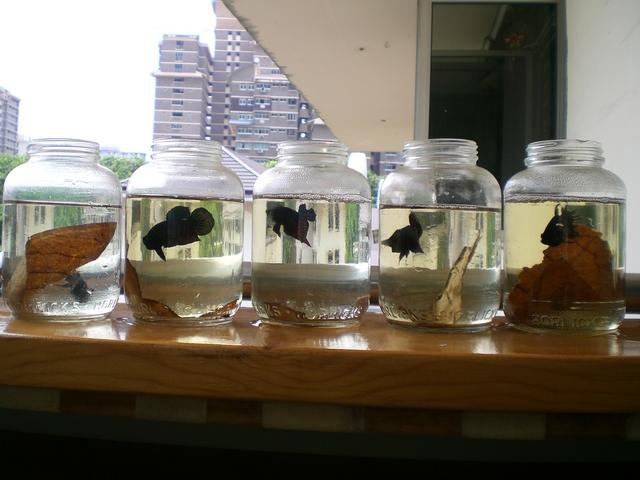 |
| The above picture shows a collection of male fighters obtained from a player for breeding. They belong to Thai and Malaysian Ipoh bloodlines. |
Spawning :
 |
| Conditioning brood fish for breeding, paired and placed side by side. Males are selected for their fighting abilities while the females are selected from the family with a long line of champions. |
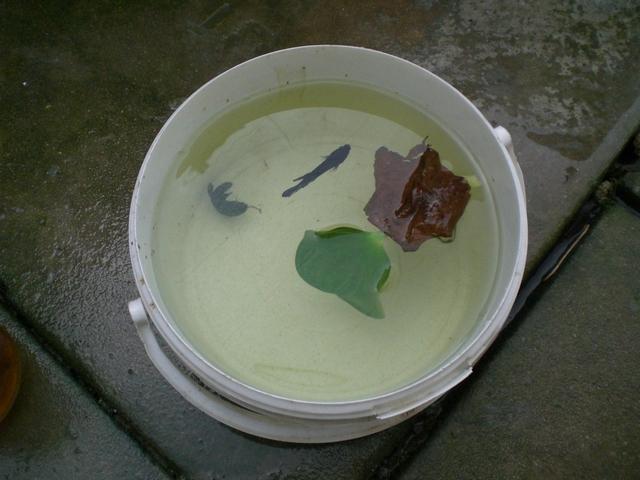 |
| Single pairs are placed in breeding containers containing 3 to 6 litres of water. One or 2 clean water hyacinth leaf and pieces of dried ketapang leaves(IAL) for the male to build its bubble nest below them. The containers are then covered. Spawning takes place within 2 days and the adhesive eggs are attached to the leaves. The female parent is removed after spawning and the male parent is left to take care of the eggs. Hatching takes place in about 2 days. After hatching, the fry are kept in breeding container for another 1 to 2 days until they are free swimming. Feeding will start at this point when they begin to swim horizontally and go around foraging for food. Moina is the preferred food used by local breeders to feed the fry as they are small enough for them to eat and is relatively cheap and easily available. On top of that, as a live food it is highly nutritious and is an indispensable feed for the bettas from fry stage all the way to adulthood. Moina will remain as part of the bettas diet throughout, with the exception that the portion given may be smaller and replaced partially with other food combination like tubifex worms and bloodworms etc. |
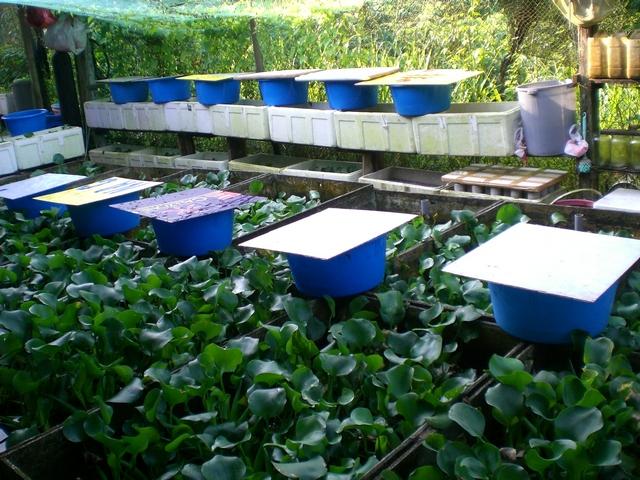 |
| Fighter spawning area, notice the blue basins used as breeding containers and are covered with plywood. |
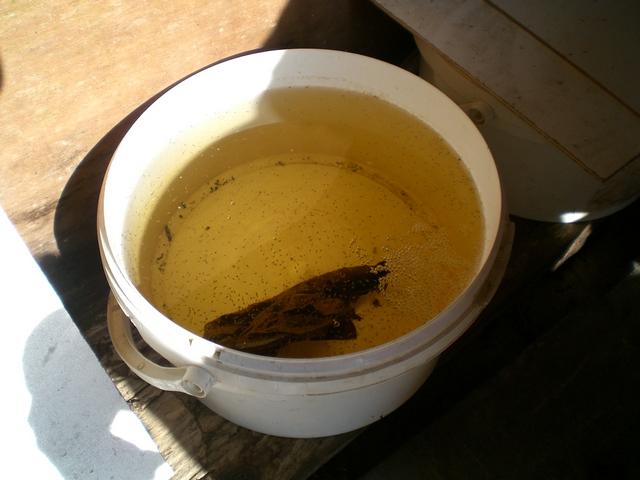 |
| Newly hatched fry in a breeding container. |
Nursery Stage :
 |
| The fry are transferred to styrofoam boxes and kept there for about 10 days. Water level about 7cm. |
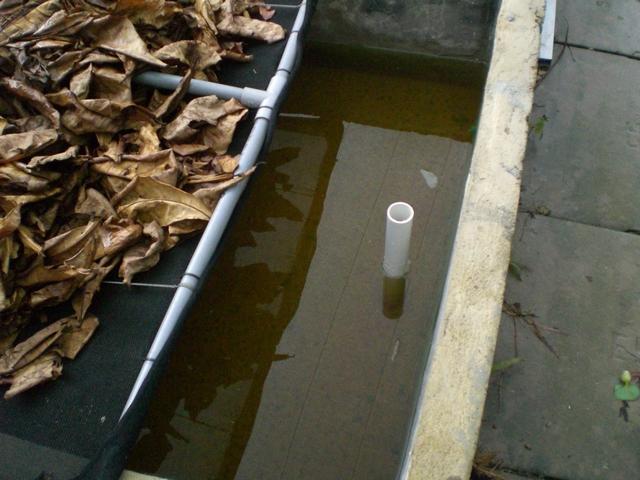 |
The next stage is to transfer them into concrete tanks, with water level of about 10cm, and contains dried ketapang leaves(IAL) and water hyacinth plants. The tanks are partially shaded. The fry are fed twice a day on a diet of live Ang Boon(Daphnia/Moina). They are kept this way for 1 month.
The fry are moved to a new tank with the water level raised to about 15 to 20cm with no shade. Dried leaves and water hyacinth plants are provided and the fishes are fed live Tubifex worms and live Daphnia/Moina once a day. They are kept this way for a month. |
Juvenile Stage :
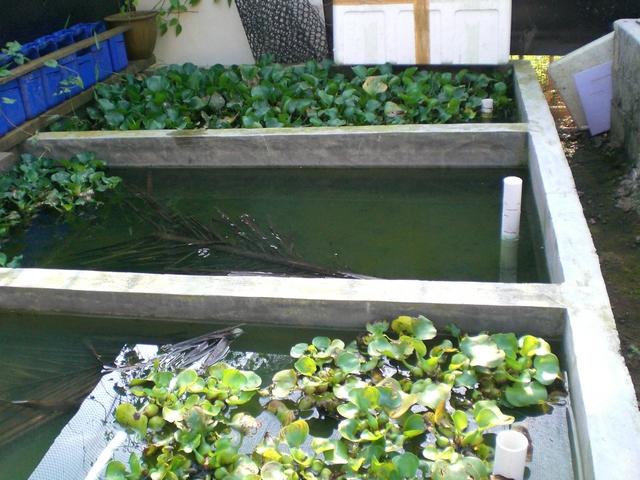 |
| By this time the fry are about 2 and a half months old, they are then transferred to tanks with water raised to 30cm. |
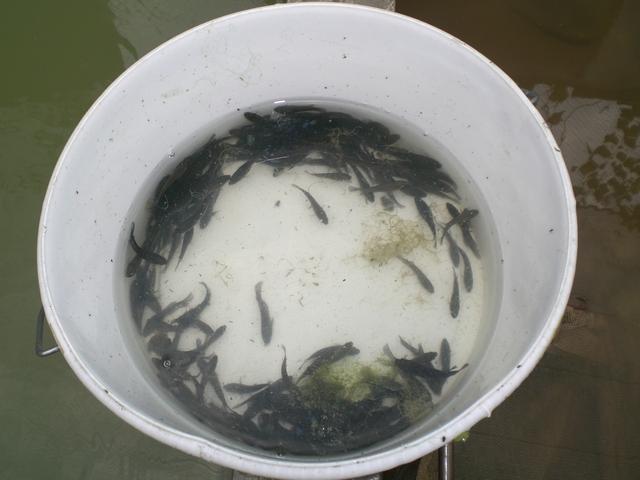 |
| At the 3 and a half month mark, the fishes are harvested and the male and female fish are sorted and stocked in separate tanks. The males tanks will consist of about 10% females, this is to maintain some peace and harmony among the males. The females should be smaller ones so as not to challenge the males for food, priority are given to the caring of the male fishes. The fighting strains' aggressive streak will rear its head at this point onwards, the male juveniles will fight each other, care must be taken to prevent injuries to the brood. |
Adulthood :
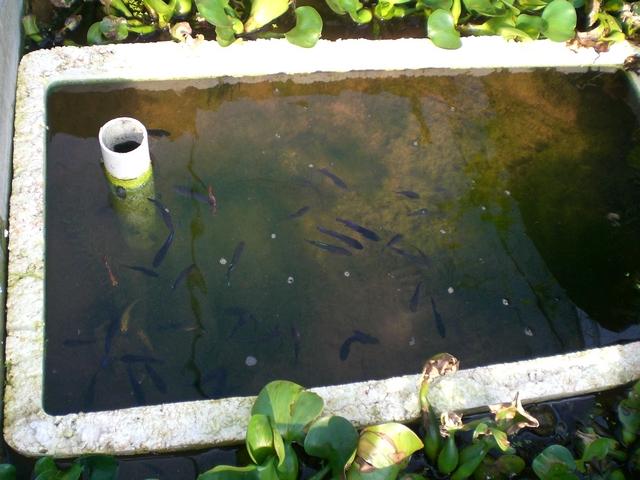 |
| The fighters are reared in 30cm water depth and will need good sun light. Dry and hot weather will produce tough fishes. Notice the clearing created by the floating styrofoam, an area free of water hyacinth plants in the above picture. This ensures the fighters receive a good dose of sun light. Water hyacinth plants are used extensively to reduce toxic ammonia produced by the wastes of the fishes, it assists in maintaining water quality, breeders prefer not to change the water as much as possible. Guppies are reared in the tanks, being less robust and requiring better water quality to strive then bettas, they are useful in monitoring overall tank conditions. The birth of guppy fry in the tank also provides the preying bettas with a rich source of live food.The ponds can be concrete or earthen, but some breeders prefer the middle path, they built ponds with concrete walls with an earthen base. These breeders believe such water condition will raise better fighters. Breeders may also control and monitor the fishes' diet prior to harvesting. |
 |
| A fighter fresh from the ponds, will need about 2 weeks of conditioning and training to prepare them for the arenas. |
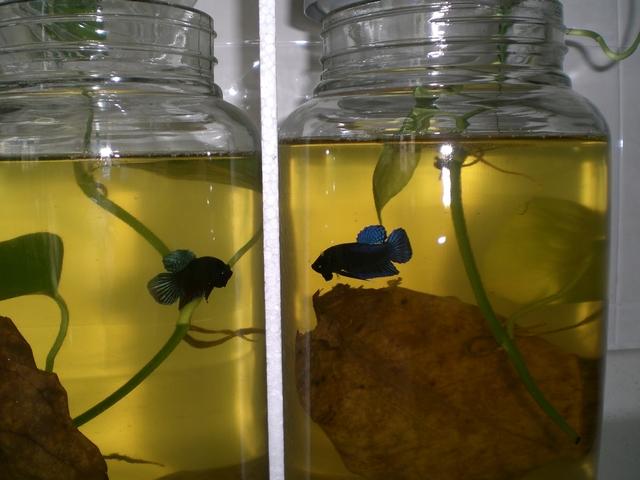 |
| Fighters are about ready for competitive fights at about 5 months old, they are released to the players for "AhLoo"(Testing). Though they are sexually matured by this time, they are nevertheless young adults, their scales are not strong and the bones have barely developed completely. Young fish are eager fighters, more energetic and will fight hard right from the beginning. Lacking patience, they are relentless in aggression, and very often will exhaust themselves quickly. Once these young fighters ran out of steam, their will to fight are often broken too. Matured fighters at between 9 months to 12 months old are the prefered choice for experienced players. Local commercial breeders faces high land and labour costs, these put many breeders in an increasing difficult economic situation. Profitability has rested on good spawns which are few, for a good price against the backdrop of very keen competition coming from neighbouring countries, especially those fighters from Ipoh, Malaysia. Many breeders sell away their fighters as early as possible, pushing them to the players for a quick buck and reduce overall operation costs. Fighting young fish may result in a weaker fish, so some players will book the entire spawn and have them raised by the breeders or by themselves for a few additional months, as older and physically matured fishes will tend to fight longer and lasts longer too. |
|
email: redhillbetta@yahoo.com.sg
THE END |
